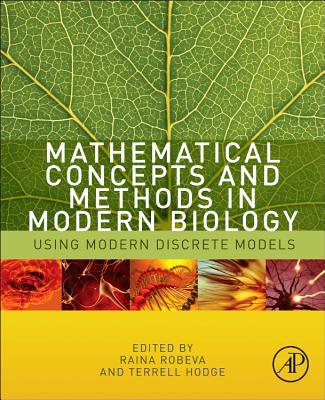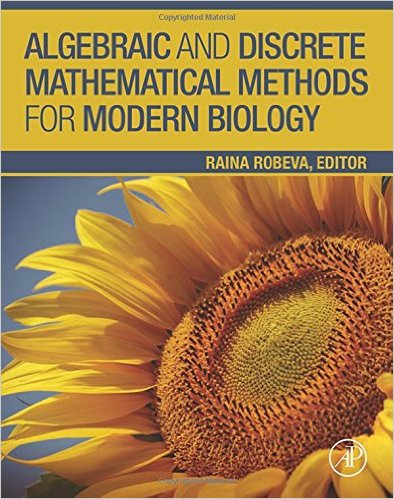Math 4500, Spring 2025
Math 4500, Spring 2025


"Mathematics is biology's next microscope, only better; Biology is
mathematics' next physics, only better." --Joel E. Cohen
"All models are wrong, but some are useful." --George E. P. Box
About the class
This class will be an introduction to mathematical modeling with a
particular focus on mathematical biology. We will sample from a
variety of problems and modeling techniques throughout the
class. Unlike most undergraduate math classes, the scope of this class
will be more about breadth than depth.
The course will be roughly divided into thirds: The first third will
cover continuous models such as differential equations and
difference equations, covering topics such as logistic, predator-prey,
and infectious disease modeling. The second third will
cover discrete models such as cellular automata, agent-based
models, and Boolean models of gene networks. The last third will
cover stochastic models, such as phylogentics, RNA folding, and
hidden Markov models in genomics.
Resources
Software
- NetLogo, a multi-agent programmable modeling
environment.
- The "Cyclone" program for computing the phase space of an algebraic model: Web version | GitHub.
- Macaulay2: online software for computational algebraic geometry and commutative algebra. Can be downloaded or run online.
- GINsim (Gene Interaction Network simulation), a computer tool for modeling and simulation of Boolean and logical networks.
- Conway's Game of Life applet.
Code
- MATLAB files for difference equations: cobwebbing (cobweb.m), a single species population model (onepop.m) the predator-prey model (twopop.m), and the SIR model (sir.m). Written by Elizabeth Allman and John Rhodes, authors of Mathematical Models in Biology.
- MATLAB files for epidemic models, from Chapter 2 of Modeling infectious diseases by Matt Keeling and Pejman Rohani, with online resources such as MATLAB files:
Programs 2.1,
2.2,
2.5, and
2.6.
- BoolNet
- Cyclone
- The lac
operon toy model with 5 variables, including 2 parameters,
from Chapter 1 of Robeva/Hodge (2013).
- Flawed lac operon model with 5 variables from Chapter 1 of Robeva/Hodge (2013).
- The lac operon model with 13 variables
(including 3 parameters) of Stigler/Veliz-Cuba (2011).
- The tna operon model with 10 variables
(including 3 parameters) of Deal et al. (2023).
- Macaulay2
Homework
- HW 1: pdf |
tex. Topic:
Differential equation models. Due Friday,
January 24, 2025.
- HW 2: pdf |
tex. Topic: Difference equations, the logistic
map, population models and linearization. Due Tuesday, February
4.
- HW 3: pdf |
tex. Topic:
Models of structured populations. Due Tuesday, February 11.
- HW 4: pdf |
tex. Topic:
Models of interacting populations. Due
Tuesday, February 18.
- HW 5: pdf |
tex. Topic: Infectious disease modeling. Due Wednesday February 26.
- HW 6: pdf |
tex. Topic: Chemical reaction networks. Due Friday, March 7.
- HW 7: pdf |
tex. Topic: Cellular automata and agent-based models. Due Monday, March 31.
- HW 8: pdf |
tex. Topic: Boolean models of molecular networks. Due Friday, April 18.
Lecture notes
These are the versions from a previous time that I taught this class,
and they will likely be improved and updated as we get to them
throughout the semester.
Part I. Differential and difference equations
- Introduction to modeling. 3 pages
(handwritten). Updated Jan 23, 2022.
-
Difference equations. 12 pages. Updated Jan 20, 2022.
- Analyzing nonlinear models.
4 pages (handwritten). Updated Jan 22, 2013. (will replace soon)
- Models of structured populations. 8 pages. Updated
Jan 21, 2015.
- Predator-prey models. 11 pages. Updated Jan 28,
2015.
- Infectious disease modeling. 12 pages. Updated Feb
9, 2015.
- Modeling biochemical reactions. 17 pages. Updated
Feb 20, 2025.
- Gene regulation by operons. 16 pages. Updated
Feb 20, 2025.
- Delay
differential equation models of gene regulation. 29
pages. Updated Feb 27, 2025.
Part II. Discrete and agent-based models
- Cellular automata and agent-based models. 18 pages. Updated February 11, 2015.
- Basics of Boolean modeling. 18 pages. Updated Feb 27, 2025.
- Boolean models of molecular networks. 14 pages. Updated Feb 27, 2025.
- Advanced features of Boolean models. 26 pages. Updated Mar 25, 2025.
- Reduction of Boolean network models. 21 pages. Updated Mar 25, 2025.
Part III. Stochastic models: genetics, nucleic acids and
phylogenetics
- CpG islands and hidden Markov models. 12 pages. Updated October 28, 2016.
- Hidden Markov models and dynamic programming. 12 pages. Updated April 19, 2017.
- Combinatorial approaches to RNA folding. 16 pages. Updated April 15, 2016.
- RNA folding via energy minimization. 15 pages. Updated April 15, 2016.
- RNA folding via formal language theory. 14 pages. Updated April 15, 2016.

